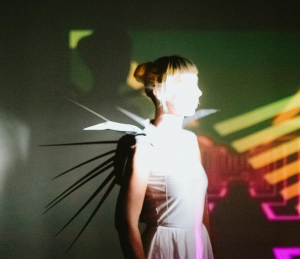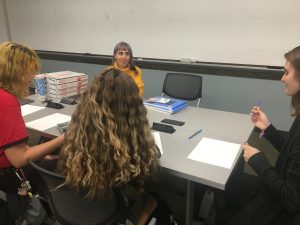Red Zone Initiative: Art Against Assault
If you Google search “The Red Zone”, you’ll get over 3.1 billion results. In gridiron football, the red zone is the area of the field between the 20-yard line and the goal line. I clicked on the ever-forgotten second page of Google to see if I could find results that didn’t include American football, but couldn’t seem to find any results. Seven pages into google, a record high for me, I gave up trying to find what I was looking.
The elusive “Red Zone” material I was trying to find is something drastically more alarming than the Super Bowl, but way less known. “The Red Zone” is the period from the first day of university to Thanksgiving break where over 50% of all sexual assaults occur. Female-identifying first-years are especially vulnerable during this time, as they find themselves in a foreign environment, lacking a strong support system and overall less experience with school, parties, and the “college experience”.

The Red Zone Initiative is a joint collaboration between Arts Everywhere and UNC’s Student Government to bring more awareness to this extremely significant time. To garner awareness in an interactive way, we brought Mirabelle Jones to campus. Jones, a queer non-binary artist and California native, is a counselor and founder of a grassroots organization called Art Against Assault. Art Against Assault was born out of Mirabelle’s own frustration with street harassment, and led to her most viral works. The organization encourages the development of creative works that highlight sexual assault and domestic violence awareness, while simultaneously raising funds for national and local survivor resources.
Mirabelle’s residency started on October 14th, which consisted of an Art installation Lenoir and two workshops. The art installation in Lenoir was a version of Hystrix, a robotic wearable that reacts to street harassment using biomimicry. Through a system of sensors, the suit can tell when the wearer is stressed, triggering animatronic spikes to protrude. The version in Lenoir had a proximity-activated video documentation of the suit. When you approached the installation, the sensor would trigger the video to play.


The first workshop, an Anti-Street Harassment Wearables Workshop, was held at the school of public health. The outline of the workshop included a discussion on street harassment and its effects on both the mind and body, as consistent street harassment can have long-term effects on a person’s mental and physical state. Students could also use biomimicry to begin developing their own custom robotic armor using sensors and electronic components, inspiring attendees to explore how they would fight back against harassment with creativity.
The second workshop was also held at the school on Public Health. In Art & Advocacy: Social Justice through Creativity, students were invited to share examples of well-known and lesser-known artists who speak out against gender violence through a variety of media. Mirabelle Jones shared works from their personal portfolio, which included viral anti-street harassment posters to endurance performances, such as To Skin a Catcaller. At the end of the workshop, students were invited to imagine their own pieces (in any media) that would speak out against gender violence.

Thank you, Mirabelle, for joining us on campus for the Red Zone Initiative. The workshops and art installation provided for a creative and thought-provoking space that brought awareness to an important and sensitive topic in a low-pressure environment.